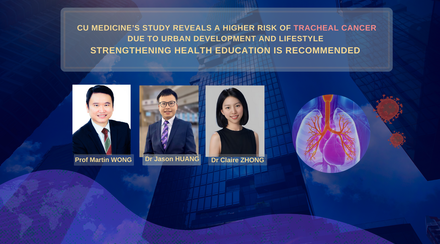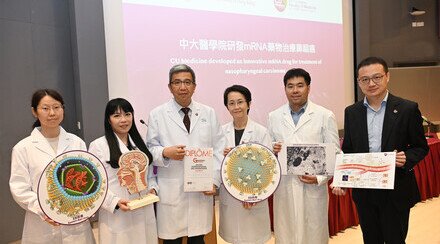CUHK develops novel molecular classification of cancer-associated fibroblasts across multiple cancers, improving understanding for more targeted treatment
- A research team from CUHK’s Faculty of Medicine recently identified four distinct molecular clusters of cancer-associated fibroblasts (CAFs), greatly aiding understanding of complex tumour microenvironments.
- The breakthrough finding will further the development of more targeted and effective treatments for various types of cancer.
In a significant discovery in cancer research, a team from the Department of Anatomical and Cellular Pathology in The Chinese University of Hong Kong (CUHK)’s Faculty of Medicine (CU Medicine) that also includes two medical students has developed a unified molecular classification of cancer-associated fibroblasts (CAFs) on a pan-cancer scale, a breakthrough that promises to enhance the understanding of cancer progression and treatment. The landmark findings have been published in leading journal Clinical and Translational Medicine.
Classifying CAFs at molecular level helps develop more targeted and effective cancer treatment strategies
CAFs are critical components of the tumour microenvironment and play a dual role in either promoting or hindering cancer growth. Employing a comprehensive single-cell transcriptomic atlas encompassing 12 solid tumour types, the CU Medicine research team identified four distinct molecular clusters of CAFs that are observed across various solid tumour types: progenitor CAF (proCAF), inflammatory CAF (iCAF), myofibroblastic CAF (myCAF) and matrix-producing CAF (matCAF).
“This discovery is a major step forward in understanding the complex dynamics of the tumour microenvironment,” said lead researcher Professor To Ka-fai, Chairman of the Department of Anatomical and Cellular Pathology at CU Medicine. “By classifying CAFs at molecular level, we can now develop more targeted and effective treatment strategies for various types of cancer. This has broad applicability in cancer research.”
One key finding of the study is the identification of the matCAF subtype, which is associated with poorer prognoses in several types of cancer, including breast and gastric cancers. The research team further discovered that molecule procyanidin C1 (PCC1) can inhibit matCAF, demonstrating promising anti-tumour activity, and paving the way for new therapeutic strategies.
Professor Kang Wei, Assistant Professor in the Department of Anatomical and Cellular Pathology at CU Medicine, elaborated, “We are particularly excited about the potential of targeting the matCAF subtype using PCC1, as it offers new opportunities for therapeutic interventions and improved patient outcomes. This research has shed light on the role of CAFs in cancer progression and has the potential to revolutionise cancer treatment strategies.”
The study also revealed that the iCAF subtype was notably absent in “cold” tumour types, which typically have a poor response to immunotherapy. This finding opens new avenues for improving the effectiveness of cancer treatments.
Practical experience lays foundation for medical students to become clinician-scientists

In the photo are Brian Chan (left) and Wilson Mui (centre), both year 5 students in the Global Physician-Leadership (GPS) stream, and postdoctoral fellow Dr Chen Bonan (right).
Brian Chan and Wilson Mui, both year 5 students in the Global Physician-Leadership (GPS) stream, together with postdoctoral fellow Dr Chen Bonan, administered this study under the supervision of Professor To and Professor Kang. This is the students’ second published study with the team.
Professor To praised their contributions. “The dedication and hard work of our team, including Brian, Wilson and Bonan, have been instrumental in the success of this study,” he said.
Brian added, “This project has been an incredible learning journey for me. I have learned the techniques of single-cell analysis and, through the collision of basic research and clinical knowledge, I can lay the foundation for my future career as a clinician-scientist.”
Wilson also expressed his gratitude to his mentors. He said, “I have systematically improved my scientific thinking and I have also learned a lot of scientific writing skills. I am very grateful to the medical school for training me and providing such an invaluable opportunity.”
The original study can be accessed here: https://pubmed.ncbi.nlm.nih.gov/38148640/



















































